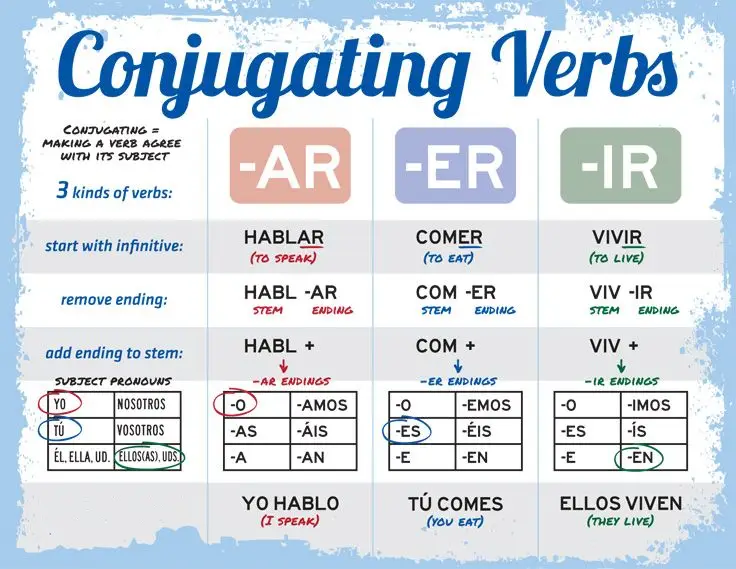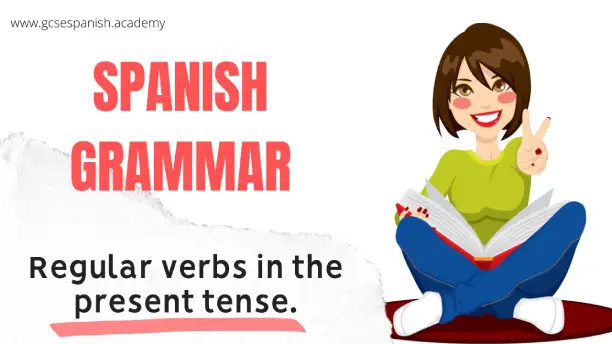There is not a lot you can do without verbs. Your Spanish won’t make very much sense without them. We are going to start by learning the Spanish regular verbs in the present tense, but first, you must know a few essential points about verbs.
Verbs are actions

- Verbs are actions words, for example, «to speak (hablar)», «to eat (comer)» or «to live (vivir)»
- Verbs can be put in different tenses: present, past, future… to express when those actions took place.
- To use a verb you have to start by learning its infinitive, that is the form you can find in the dictionary, e.g, «to study (estudiar)», «to read (leer) or «to write (escribir)».
Forming the present tense of the regular verbs
In the video below we are going to see some general rules to form the present tense of regular verbs in Spanish. Then we will expand the information and practice what we have learned. Let’s start with the video.
- Remember! All Spanish infinitives end in «AR», «ER» or «IR». To form the present tense of these verbs you need to find the stem.
- To do this, remove the last two letters of the infinitive: «hablar= habl…», «comer= com…» and «escribir=escrib…»
- Then add the ending below to the stem.

When to use the present tense
- Use the present tense for actions taking place now: Estudio derecho en la universidad (I am studying law at the university).
- You also need to use the present tense for things that take place regularly: Todos los días me levanto a las 7:00 (Everyday I wake up at 7:00).
- Use the present tense with «desde hace» to say how long you have been doing something: Toco la guitarra desde hace dos años (I have been playing the guitar for two years).
- You can also use the present tense for things that are about to happen (if they are scheduled): Mañana tenemos un examen (Tomorrow we have an exam).
